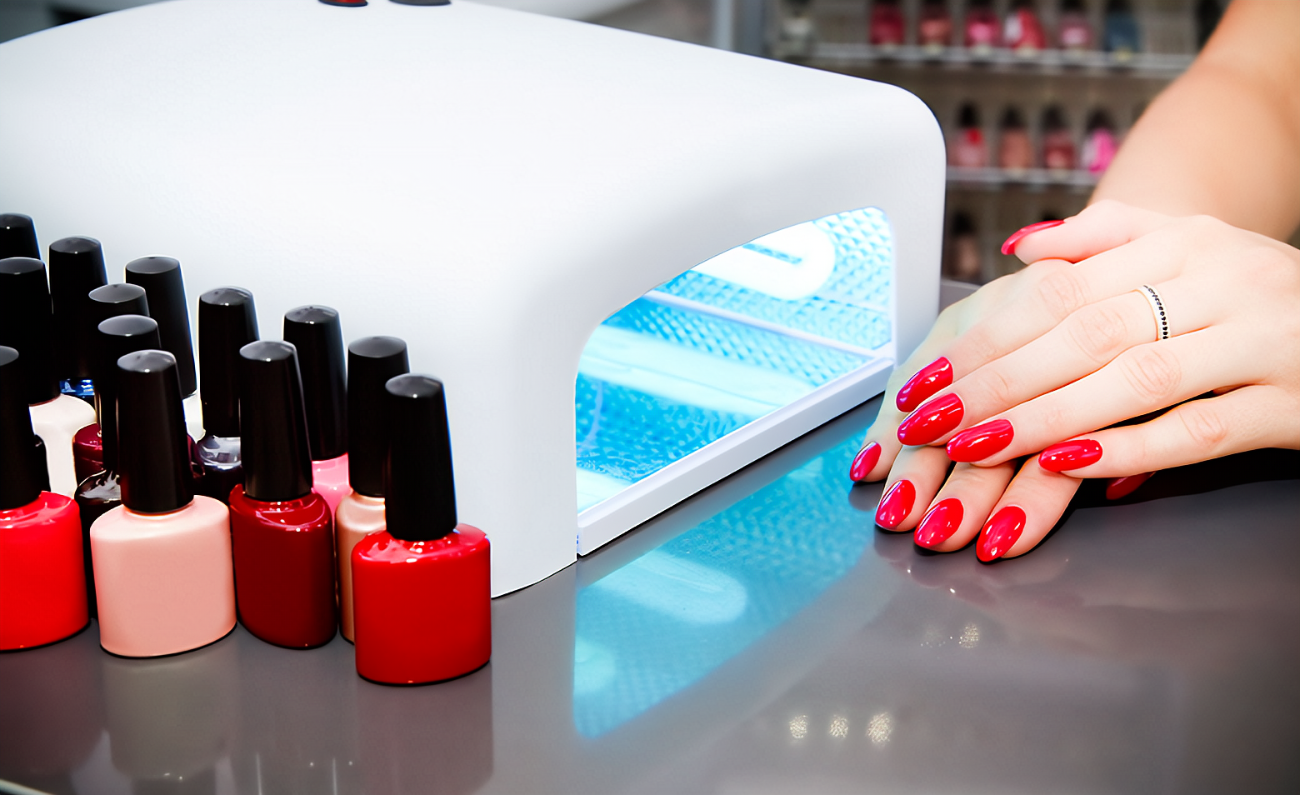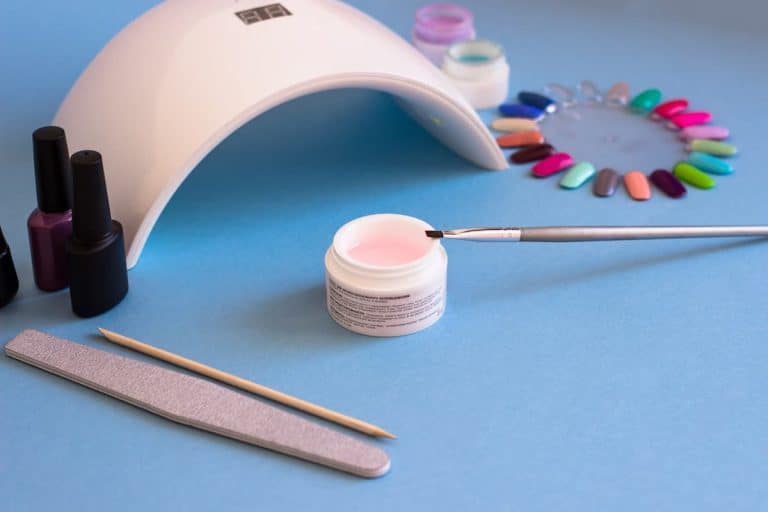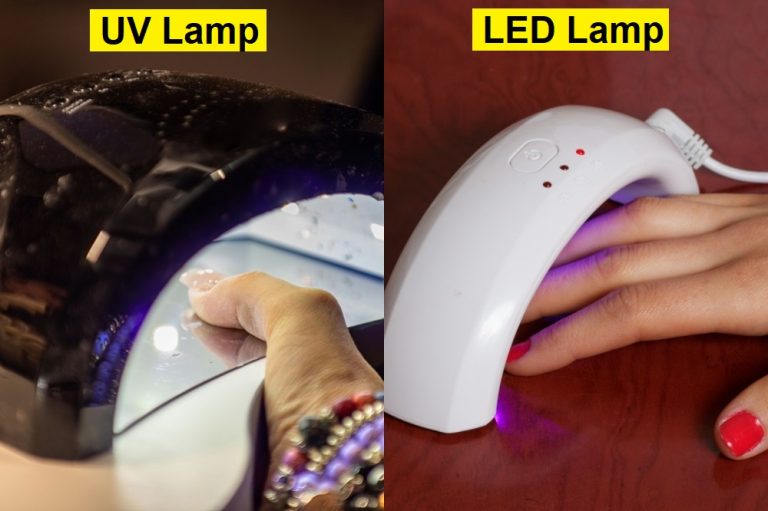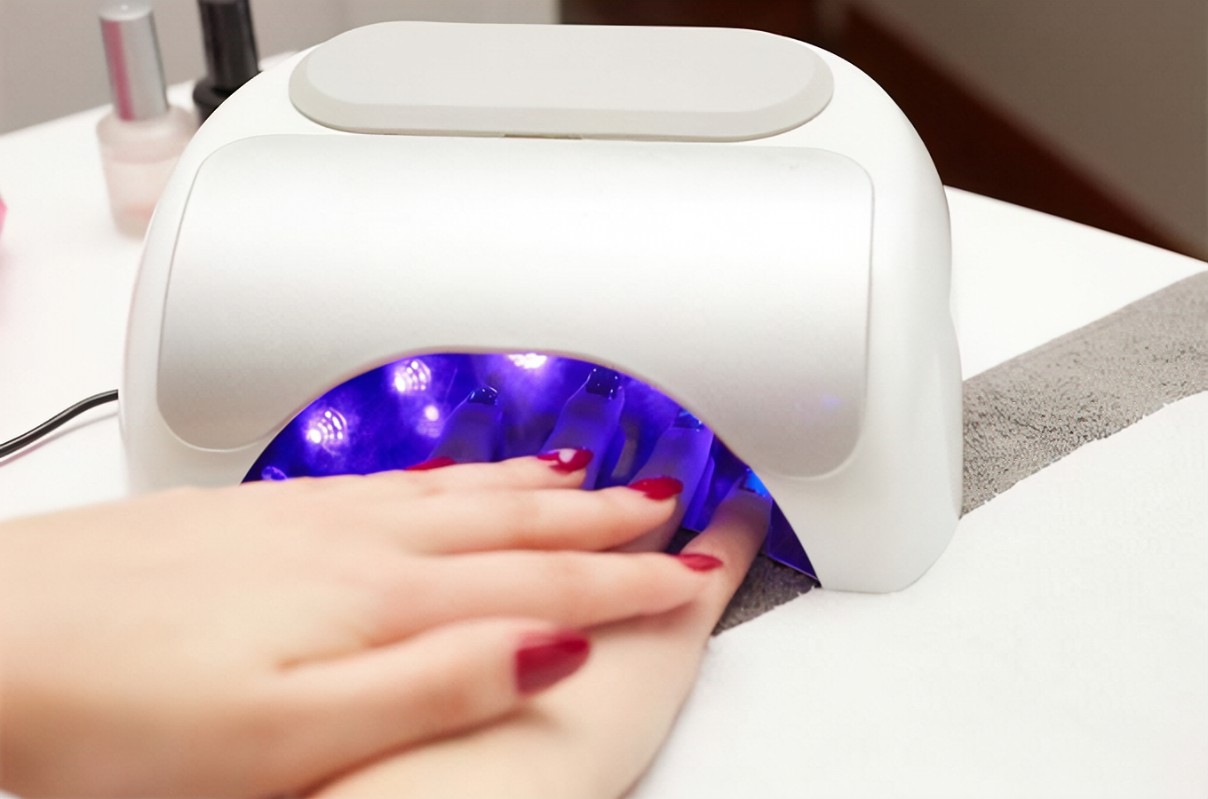In the realm of nail care, the choice between LED and UV nail lamps has become a pivotal consideration for both enthusiasts and professionals alike. “Why Is a LED Nail Lamp Safer Than UV?” delves into this query, shedding light on the essential disparities between these two technologies. Let’s embark on a journey to uncover the fundamental workings of LED and UV lamps, exploring their impact on safety, radiation levels, chemical components, and the preference of professional nail technicians. By the end, you’ll be equipped with the knowledge needed to make an informed decision for a safer and healthier approach to your nail care routine.
LED Working Principles: Illuminating the Difference
LED Technology Overview: LED (Light Emitting Diode) nail lamps operate by emitting light through the movement of electrons in a semiconductor. Unlike UV lamps, LED lamps produce light in a specific wavelength range, typically between 350 to 450 nanometers, closely aligned with the curing needs of gel polishes.
Key Points:
- Precise Wavelength: LED lamps emit targeted wavelengths, ensuring optimal gel curing.
- Energy Efficiency: LED technology consumes less energy, promoting sustainability.
- Instant On/Off: Immediate activation and deactivation enhance user convenience.
UV Lamp Operation: UV (Ultraviolet) nail lamps employ ultraviolet light to cure gel polish. They generate a broader spectrum of wavelengths, including UVA and UVB, contributing to longer curing times and potential risks associated with extended UV exposure.
Key Points:
- Broad Wavelength Spectrum: UV lamps emit a wider range of UV light, including UVA and UVB.
- Longer Curing Times: Gel polish may require more time to cure under UV light.
- UV Exposure Concerns: Prolonged exposure to UV light may pose risks to skin and eyes.
Understanding the fundamental disparities in the working principles of LED and UV lamps allows you to make an informed choice based on efficiency, safety, and user-friendly features.
Radiation and Safety: A Comparative Analysis
LED Radiation Levels: Understanding the Minimal Impact
Analysis of LED Radiation: LED nail lamps are renowned for their minimal radiation levels, attributed to their focused wavelength emissions. The specific wavelength range, typically between 350 to 450 nanometers, ensures effective gel curing with negligible impact on the skin.
Key Points:
- Focused Wavelength: LED emits light in a specific range, minimizing unnecessary exposure.
- Negligible Skin Impact: Low radiation levels reduce the risk of adverse skin effects.
- Safe Curing: Efficient gel curing without compromising skin safety.
Potential Risks of UV Radiation: Navigating Skin Health Concerns
Exploring UV Radiation Risks: UV nail lamps utilize a broader spectrum, including UVA and UVB, potentially posing risks to skin health. Extended exposure may contribute to premature aging, pigmentation, and other dermatological concerns.
Key Points:
- Broad Spectrum: UV lamps emit UVA and UVB, extending the wavelength range.
- Skin Health Considerations: Prolonged UV exposure may contribute to skin-related issues.
- Precautionary Measures: Emphasizing the importance of protective measures during UV sessions.
Understanding the disparity in radiation levels between LED and UV lamps empowers users to prioritize safety without compromising the efficiency of their nail curing process.
Comparing Chemical Components: LED vs. UV Lamps
Chemical Composition in LED Lamps: Emphasizing Relative Safety
Introduction to LED Chemicals: LED nail lamps commonly utilize safe chemical components to facilitate the curing process. These components, such as semiconductor materials and phosphors, contribute to the targeted and efficient curing of gel polishes with a focus on user safety.
Key Points:
- Semiconductor Materials: Essential for LED light emission, these materials pose minimal risk.
- Phosphors: Used to adjust light color, ensuring a safe and controlled curing process.
- Targeted Curing: Chemical components are chosen for their effectiveness without compromising safety.
Chemical Components in UV Lamps: Navigating Potential Health Risks
Comparative Analysis of UV Chemicals: UV nail lamps may contain chemicals like mercury, which can be a concern for users. Highlighting these substances raises awareness about potential health risks associated with prolonged exposure.
Key Points:
- Mercury Content: Some UV lamps may use mercury, a substance that warrants caution.
- Health Risks Awareness: Encouraging users to be mindful of potential hazards in UV lamp usage.
- Regulatory Compliance: Emphasizing the importance of choosing UV lamps that adhere to safety regulations.
Understanding the chemical composition disparities between LED and UV lamps enables users to make informed choices, prioritizing both effective gel curing and their overall well-being.
Protecting Eyes and Skin: A Comparative Insight
Eye Protection with LED Lamps: Minimizing Irritation
Exploring LED Eye Safety: LED nail lamps are designed with user safety in mind, causing minimal eye irritation during use. The focused wavelength range ensures a targeted curing process, and protective measures further mitigate potential discomfort.
Key Points:
- Focused Wavelength: LED’s specific wavelength minimizes eye strain during use.
- User Comfort: Designed to provide a comfortable experience without compromising safety.
- Protective Measures: Highlighting built-in features or recommended practices for eye protection.
Potential Eye and Skin Risks with UV Lamps: Emphasizing UV Radiation Concerns
Addressing UV Risks: UV nail lamps, due to their broader spectrum, pose potential risks to both eyes and skin. Emphasizing the importance of protective measures helps users understand and mitigate the risks associated with prolonged UV exposure.
Key Points:
- UV Radiation Hazards: UV lamps may contribute to eye strain and skin-related issues.
- Protective Recommendations: Advising on protective measures such as UV-blocking glasses and sunscreen.
- Awareness and Precaution: Encouraging users to be vigilant and take necessary precautions during UV sessions.
Understanding the differences in eye and skin protection measures between LED and UV lamps empowers users to prioritize their safety while indulging in nail care routines.
Preferred Choice for Professional Nail Technicians: LED Lamps
Exploring Professional Preference: Professional nail technicians favor LED nail lamps for a multitude of reasons, with safety considerations at the forefront. This section delves into the specific aspects that make LED lamps the preferred choice in the competitive field of professional nail care.
Key Reasons for Professional Preference:
- Efficiency and Time-Saving: LED lamps offer quicker curing times, allowing technicians to serve clients more efficiently.
- Client Comfort: The focused wavelength of LED light minimizes discomfort for clients, contributing to a positive experience.
- Long-Term Cost Savings: LED technology’s energy efficiency results in lower operational costs over time.
- Safety Assurance: The minimal radiation and reduced use of potentially harmful chemicals contribute to a safer working environment.
Trends in the Nail Care Industry: The Dominance of LED Lamps
Analyzing Industry Adoption: The beauty industry has witnessed a widespread shift towards LED nail lamps, reflecting market trends and consumer preferences. This section examines the prevailing trends and explores the reasons behind the industry’s inclination toward LED technology.
Key Insights into Industry Trends:
- Widespread Adoption: A significant majority of salons and nail professionals opt for LED lamps over traditional UV alternatives.
- Consumer Demand: Growing awareness of safety and environmental concerns aligns with the consumer preference for LED technology.
- Technology Advancements: Ongoing innovations in LED lamp technology continue to drive its popularity, offering enhanced features and performance.
- Regulatory Compliance: LED lamps often align with regulatory standards, ensuring industry professionals adhere to safety guidelines.
Understanding the rationale behind professional nail technicians’ preference for LED lamps and recognizing industry trends equips both practitioners and consumers with valuable insights for making informed choices in the evolving landscape of nail care.




